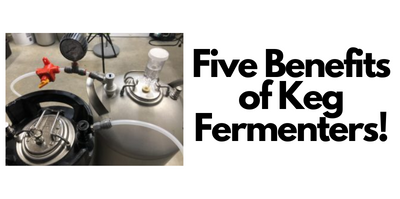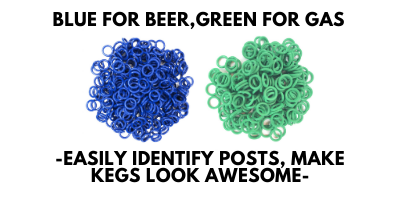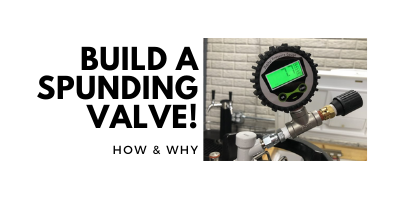
Fermenting Under Pressure!
Updated: March 14, 2025
Benefits of Fermenting Under Pressure
Pressurized fermentations are becoming increasingly popular, and for a good reason. Some of the benefits that you gain from fermenting beer under pressure are: Lower ester production, being able to ferment at higher temperatures without producing off-flavors, and having your beer carbonated by the end of fermentation. Pressure fermenters are also called uni-tanks because you can use them for both fermentation and carbonating. You can serve beer directly from uni-tanks, counter pressure fill bottles or easily transfer beer into kegs using pressure.
Related: Benefits of Using Kegs for Fermentation
Fermenting lagers under pressure is a huge benefit of uni-tank. When yeast ferment under pressure, the production of fruity esters is greatly reduced. This can allow you to brew a lager at 70F an obtain traditional lager flavor. – via MoreBeer
Since off-gassing is reduced added hop flavor and aromas are also potential benefits of fermenting under pressure.
This article is by Homebrew Finds Contributor Brad Probert. Brad is an engineer, expert homebrewer and experienced reviewer. Grab a link to Brad’s website at the end of this review.
What is Fermenting Under Pressure?
I’ll start first by defining “normal fermentation” as fermenting with an airlock or blow-off tube on your fermentor. In the chemical process of your yeast converting wort sugars to alcohol, CO2 gets naturally produced. In a normal fermentation, this CO2 pushes out of the liquid wort/beer into the headspace above your liquid level. As more and more CO2 gets produced, it starts to get crowded up there, so pressure builds up and then pushes a glug of air/CO2 through your airlock. As fermentation progresses, more CO2 is created, creates pressure in the headspace, and then vents through your blow-off tube or airlock.
- 10 gallon or 15 gallon keg Ball Lock Kegs – Hands on Review
- 12 Gallon Ball Lock Kegs
- 10 Gallon Ball Lock Kegs
- Williams Warn BrewKeg
- WilliamsWarn BrewKeg12.5™ | Stainless Conical | Unitank Fermenter | 12.5L | 3.3G FE165
- WilliamsWarn BrewKeg50 | Pressurizable Conical Fermenter | Draining Sediment Bottle | 50 L | 13.2 Gallon FE161
- WilliamsWarn BrewKeg25 | Pressurizable Conical Fermenter | Draining Sediment Bottle | 25 L | 6.6 Gallon FE160.V2
- FermZilla All Rounder Fermenter
- BrewBuilt X1 Uni+ Conical Fermenter
- Spike Brewing Flex Fermentor
- Spike Conical Fermenters
- Kegland Kegmenters – at Wiliam’s Brewing, at MoreBeer
Fermenting under pressure follows the chemical process, but instead of an airlock or blow-off tube, which has a very low pressure threshold before it relieves the pressure, you have a spunding valve attached. The spunding valve is typically set to open and release headspace pressure until a much higher level, and therefore keeps everything at a higher pressure in your fermentor (headspace and beer). This increased pressure on your yeast during fermentation changes how they behave. The two main important things that happens with yeast under pressure are: 1) It slows down fermentation rate, and 2) It suppresses production of esters and fusel alcohols.
Spunding Valves for Fermenting Under Pressure
There are multiple makers of spunding valves, with different looks and features/limitations. They can be grouped into two major types- 1) Spring & Poppet, and 2) Diaphragm. Both operate with the same basic principles. Pressure from your fermentor pushes up against the pressure regulating mechanism inside. In the Spring & Poppet, the “mechanism” is a small poppet like what you have inside the gas or liquid posts on your keg. The Diaphragm design uses a large flexible rubber/silicone disc as its “mechanism”. Resisting this pressure, on the other side of the mechanism is a spring. By turning an adjustment knob on the spunding, you can compress the spring more, which in turn pushes harder on the mechanism. Then it’s just a force balance between the pressure in your fermentor and the compression of the spring. Once the pressure overcomes the spring force, it creates a path for the compressed CO2 to escape and it bleeds off. This then regulates your pressure.
This article contains affiliate links. We may make a small percentage if you use our links to make a purchase. You won’t pay more and you’ll be supporting Homebrew Finds and more content like this. Thank you for your support!
Our Spunding Valve Resource Post!
tsrspundThe key difference is in the mechanism. The poppets are a small area by comparison to most diaphragms. This means the poppet design will be more sensitive, translating into less stable pressure regulation. Because of the geometry of the poppet, they also have greater hysteresis (open vs. closing pressure), affecting your pressure regulation stability.
Aside from these two types, another key difference between spunding valves is the max pressure capability they can handle. If you’re going to try to use it for natural carbonation, you’ll want something that has 30-35 psi capability. If you’re just trying to use the pressure to keep lager esters in check, 15-20 psi will be sufficient. In addition to the pressure range displayed on the gauge, the accuracy of the gauge itself is important and can vary from product to product.
Some valves also have a visual reference to guide you on setting your pressure, like the SPUNDit. This is handy because you don’t really know what pressure you have it set at until it starts to bleed off pressure. There are also spundings that have ports which give you flexibility of how/where you connect it in your system, like the Kegland Blowtie, which has DuoTight fittings on it.
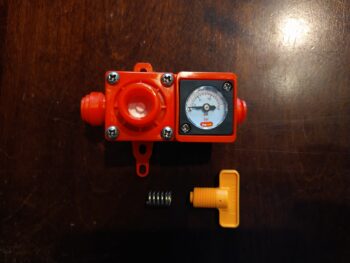 Kegland BlowTie 2.0 – BlowTie Review
Kegland BlowTie 2.0 – BlowTie Review
Pressure Capable Fermentors for Fermenting Under Pressue
In addition to a spunding valve, the other mandatory piece of equipment is a pressure capable fermentor. This is something you can’t tell just from looking at a fermentor design. Some people assume everything stainless is pressure capable, or everything with a cone on the bottom is pressure capable- but it’s not. Or they might think that to be pressure capable, it must be stainless steel, and a plastic fermentor can’t be- that’s not accurate either. The fermentor has to be engineered/designed to be pressure capable. For stainless fermentors that means a lot of work on the lid (seal design, stiffness of lid, and clamping force). For plastic fermentors, it requires a lot of work on walls and overall shape of the vessel (the lids typically have a robust threaded design for the lid which is more straightforward to design pressure capability).
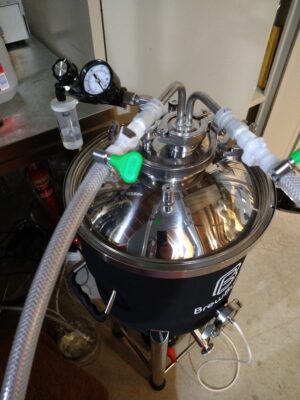 BrewBuilt X1 Conical – Hands on Review
BrewBuilt X1 Conical – Hands on Review
Stainless steel pressure-capable fermentors typically make use of Tri-Clamp (TC) ports. These ports are very pressure-capable, and the fact they are designed to a standard, you can buy devices from various manufacturers to connect. Note that they are standardized to a degree. There are different sizes (1”/1.5”, 2”, 3”, 5”), and you can’t put a 5” TC attachment onto a 1.5” TC port. But if you buy something that has a 1.5” TC fitting on it, it will work on any fermentor that has a 1.5” TC port.
TC fittings are common on the hot side brewing gear like kettles and mash tuns, but when these are on the cold side, there are some extra considerations. All TC fittings use a soft/pliable gasket to make the seal. When used on the hot side, it’s important for these to be high temperature capable, but on the cold side, your max temperature is much lower. In addition, hot side gaskets are exposed to wort for maybe 1-2 hours, but cold side gaskets are working for 1-2 weeks. Oxygen can pass through Silicone, so while it is a good solution for a TC gasket on your boil kettle, you might want to opt for different material on your fermentor. In that case, something like EPDM is better suited, which doesn’t have as high of a temperature capability but is much less oxygen permeable and more resistant to sanitizing acids like Star San. In addition, since silicone can absorb colors/smells from its surroundings, 1-2 weeks in the fermentor can absorb and trap some funky smells and requires extra cleaning & air drying to get rid of that.
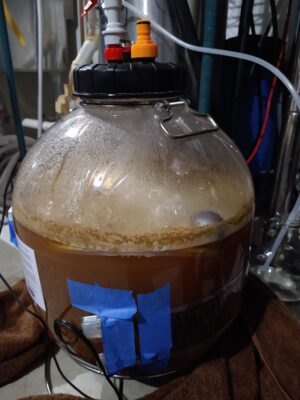 FermZilla All-Rounder Fermenting Under Pressure – Hands on Review
FermZilla All-Rounder Fermenting Under Pressure – Hands on Review
Most plastic fermentors are not pressure capable, but there are a couple out on the market. Kegland team members (who were part of Keg King at the time) pioneered this market, with their injected blow molded PET fermentors, out of Australia. These fermentors don’t have things like TC ports, but they have a high pressure capability, and the lack of extra crevices can be seen as an advantage when it comes to cleaning. Being made out plastic, they definitely make pressure fermentation available to a lot more of the homebrewing community.
Reviews of Pressure Capable Fermentors:
- Hands on Review: FermZilla All Rounder Fermenter
- Hands on Review: BrewBuilt X1 Uni+ Conical Fermenter
- Hands on Review: Torpedo 10 Gallon Ball Lock Homebrew Kegs!
- Hands on Review: Spike Brewing Flex Fermentor
- Hands on Review: Spike Conical Fermenters
- Our Complete Lineup of Fermentor Reviews!
Fermenting Under Pressure with Lager Yeasts
The most common reason you’ll hear for fermenting under pressure is so you can ferment lager yeasts at higher temperatures. Experts at Wyeast recommend still fermenting within the stated fermentation temperature range of the yeast you’re using. There are some lager strains that have a broad temperature range (Wyeast’s 2124 Bohemian Lager is 45-68F), so you can ferment at room temperature and have good yeast performance, while using pressure to keep the less desirable flavors in check.
As explained by White Labs, the reason lagers take longer to ferment isn’t due to the yeast strain itself but is due to the colder fermentation temperatures slowing down yeast processes. And the reason lager yeasts carry this cold temperature recommendation is because the slower fermentation rate suppresses unwanted flavors that are otherwise present with these strains. This cold fermentation temperature is also what drives the recommended higher yeast cell count.
Since fermenting under pressure can be used to suppress esters, it gives brewers another method to deal with lager yeasts besides just fermenting cold. And starting off fermentation at the bottom end of ale yeast temperatures (65 – 68F) can also allow you to drop back on your yeast pitch amount. According to White Labs, if you currently use the rule of thumb of doubling the yeast pitch for cold fermented lagers, you could go back to a single dose if you pitch warm.
Fermenting Under Pressure with Ale Yeasts
While lager yeasts are the most common ones targeted with pressurized fermentation, the process can be applied to ale yeasts as well. Pressure has the same effect on ale yeasts (suppress esters), but your reasons for fermenting them under pressure are likely different. Most people associate esters as something to be avoided in beer, but there are a lot of ales that depend on yeast ester flavors for their distinctive character. But just like you might want to tune and dial those flavors with fermentation temperature, fermentation pressure gives you another tool to play with. Do you like Hazy IPAs, but maybe want a slightly less tangy yeast character? Or what about a clean Kolsch with less of that white wine aroma? Or a Scotch Ale with less phenolic bite? You get the idea.
 Color Difference from Greater Haze in Pressure Fermented Beer on Left vs Normal Fermented Beer on Right
Color Difference from Greater Haze in Pressure Fermented Beer on Left vs Normal Fermented Beer on Right
Dry Hopping Under Pressure
If you’re a hop head, you know that every brewing tool can be used to do something different with your hops. In the case of pressurized fermentation, there are a lot of thoughts on how to use this tool with dry hopping. The aroma from a fermenting dry hopped beer is a love/hate relationship. You love the aroma when you walk near your fermentor, but the more you smell it, the more you get worried about all the goodness that’s escaping from your beer. So, a lot of people have the thought of using pressurized head space to try to keep as much of that hop character in the beer as possible.
There doesn’t seem to be traceable science to this, but it doesn’t detract us from trying. The headspace in your fermentor is a fixed volume during your fermentation. By using your spunding valve to raise the pressure at which the headspace will bleed off, you are shortening the percentage of time you will be venting gases. And if you just target spunding at the end of fermentation, once you add dry hops, you might be able to avoid off-gassing at all after your dry hops are added.
Related: Recent Hop Deals
Now that you’re sold on this concept, Scott Janish’s website has a fairly extensive blog post (and comment Q&A at the bottom) where he has tried this method and it ended up actually producing beers with slightly muted hop character. So, this may require some experimentation to find the right combination of process variables to get it to work. One thing that is known, is oxidation is the enemy of hoppy beers. So even at a lower pressure setting, you can utilize a spunding valve to manage the oxygen in your headspace and use CO2 to do pressurized closed transfers from fermentor to keg. And oxygen minimization in your finished beer does have traceable science to being good for hop flavor/aroma.
Naturally Carbonating with Pressurized Fermentation
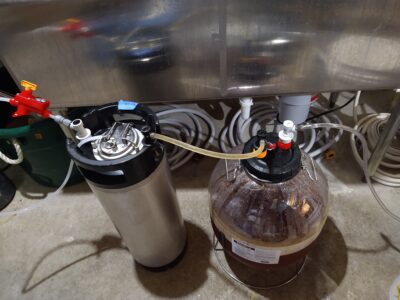 Closed Transfer of Naturally Carbonated Pressure Fermented Beer
Closed Transfer of Naturally Carbonated Pressure Fermented Beer
Every brewer is probably familiar with the Reinheitsgebot in Germany, with respect to the ingredients of malt, hops, water, and yeast. But it also precludes force carbonation with CO2. Now I don’t personally know any homebrewer that follows the Reinheitsgebot, but it’s a good segue to another process you can incorporate with fermenting under pressure. You can build carbonation in your beer by keeping the CO2 that the yeast is naturally producing, in your beer. The pressure in the headspace will determine whether the CO2 created from yeast fermentation stays suspended in the beer or escapes out into the headspace. The higher you set the pressure on your spunding valve, the more CO2 that stays in your liquid beer.
To calculate the pressure to set your spunding to for natural carbonation, you simply use the standard carbonation table like you use for setting your kegerator pressure. You determine your target volumes of CO2 (based on beer style or preference), then set the spunding valve to the pressure from the table based on the temperature you are fermenting at. It’s very straightforward to figure this out, but to get your full carbonation this way, it’s a bit trickier.
For example, let’s say you’re targeting 2.4 vols of CO2 for an American IPA, and you’re fermenting in your basement at 68F. The carbonation tables show that you need 28 psi (2 bar) of head pressure. That’s the easy part. But that means your fermentor must be capable to that pressure. Several pressure-capable fermentors are only capable to 10-15 psi, and that’s only 1.4 – 1.7 vols of CO2, which is down at the bottom end of British Ale recommended carbonation. Another challenge with 28 psi is within the very small data set of homebrew experiments published, an experiment conducted by Blichmann and White Labs Yeast showed that fermenting at 28 psi at room temperature generated a higher level of unwanted flavor compounds. Blind taste testing also indicated this higher pressure fermented beer was not preferred.
A potential workaround for this is doing most of your fermentation with the spunding valve set to a lower 10-15 psi so you can ferment warm but suppress esters, and then crank up the spunding to 28 psi toward the end of fermentation. You’ll need to have confidence in predicting your FG, and then dial up this pressure for the last ~5 points of SG to ensure enough carbonation potential left in your beer. This, in theory, should give you the best of both worlds with natural carbonation but minimal risk in ester formation from the higher pressure.
Fermentation Time as it Related to Fermenting Under Pressure
There is a common misunderstanding that fermenting under pressure speeds up your fermentation time. But that’s not directly true. If you kept temperature the same, and just increased pressure, your fermentation would be slower. The increased pressure slows down the yeast metabolism. That said, when you increase pressure, you can raise your fermentation temperature without the usual ester increase. There is no clear data out there that shows how high you can take the temperature and still have acceptable yeast flavors/performance while fermenting under pressure. But typically, you can gain more in fermentation speed from raising the temperature than you are slowing by fermenting under pressure. This will surely be yeast strain dependent, as well as the taster’s personal flavor thresholds for various compounds.
Fermenting under pressure does offer some savings in overall process time that isn’t normally part of fermentation. If you’re able to ramp up to substantial pressures with your spunding/fermentor, you can be creating natural carbonation in your beer as it finishes fermenting. This of course can save you time with forced carbonation if your beer comes out of the fermentor even partially carbonated. Of course, faster isn’t always better, as sometimes a beer still takes a week or two to mellow out its initial flavors. But if you’re able to eliminate “wait for forced carbonation” from your process, you might be able to enjoy that beer sooner.
More About Fermenting Under Pressure
The studies that are out there recommend no pressure for the first 24 hours after you pitch your yeast. During this period, the yeast are going through their lag phase where they’re pulling in nutrients from the wort and preparing for their upcoming meal. Next, they begin their exponential growth phase. There are a few reasons to leave this phase alone with respect to pressure. Since pressure puts stress on the yeast, leaving them alone during this initial phase well help things get off to a good start. This initial period can also be beneficial for allowing lager yeasts to off-gas some of their Sulphur compounds rather than keeping them trapped in. After that initial 24 hours, dial up your spunding pressure, as referenced in the information above.
When cold crashing, your pressure will decrease in the fermentor. You have a fixed volume of headspace, and a defined amount/volume of gas. So, the whole PV=nRT comes into play, and your pressure and temperature are proportional to each other. When you take a warm fermentor with a pressurized headspace and cold crash it, you will have a lower pressure when it cools. You can avoid fermentor implosion during cold crash if your warm temperature fermentation is above ~15 psi, otherwise you’ll want to add CO2 to your headspace as the beer gets cooler. Your spunding valve should still function properly during cold crash, but there’s really no point of it being on there, so you should just disconnect it to avoid any potential oxygen backflow.
Another phenomenon I’ve experienced in my handful of pressurized ferment batches is that cold crashing seems to take longer to clear the beer than my traditional batches. Whether that is due to by-products created from fermenting under pressure, or if flocculation takes longer when the beer is under pressure or has dissolved CO2 in suspension, I’m not sure. My current process doesn’t use gelatin or anything when cold, just Irish Moss in the boil kettle, so I don’t know if this phenomenon affects gelatin fining effectiveness.
Since fermenting under pressure stresses the yeast cells, you need to keep this in mind if you harvest/repitch yeast. Your number of viable repitches from a batch of yeast will decrease.
Conclusions
Pressurized fermentation is a process step you can employ to speed the fermentation process of your lager yeasts, or perhaps tune the ester flavor profiles of particular yeast strains. It can also be used to speed your time from grain to glass by making use of natural carbonation during fermentation. And even if you don’t want to dabble in any of these, at a minimum, it can help minimize oxygen exposure and potential contamination risk to your beer by fermenting under even a small positive pressure. It takes some investment in gear to get a pressure-capable fermentor as well as a spunding valve. But if you can afford these, it gives you access to a whole new fermentation variable to explore in your pursuit of that beer you have imagined.
Related Gear and Resources, More Photos Below:
- Oxygen Free Transfer and Cold Crash Using a Spunding Valve
- Hands on Review: Kegland BlowTie Spunding Valve
- Build a Spunding Valve! – How and Why
- 10 gallon or 15 gallon keg Ball Lock Kegs – Hands on Review
- Convert a Keg Into a Fermenter
- Torpedo Buoy via MoreBeer – Hands on Review
- Hands on Review: DuoTight Fittings & EVABarrier Tubing
- Five Benefits of Using Corny Kegs As Fermenters
More Photos
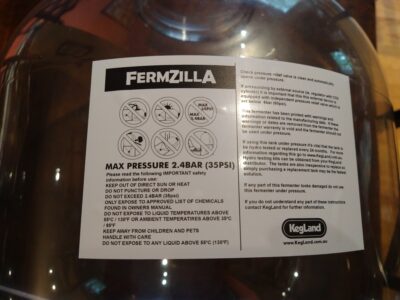 Pressure Capability Label of FermZilla All Rounder
Pressure Capability Label of FermZilla All Rounder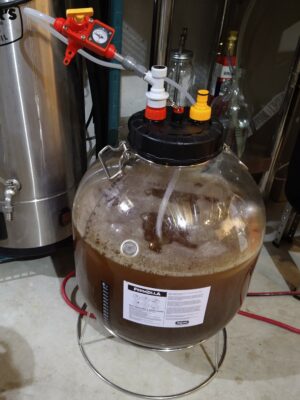 FermZilla All Rounder with Blowtie Spunding Valve Attached
FermZilla All Rounder with Blowtie Spunding Valve Attached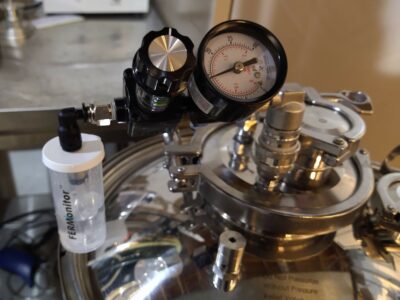 SPUNDit 2.0 Spunding Valve on BrewBuilt X1 Fermentor
SPUNDit 2.0 Spunding Valve on BrewBuilt X1 Fermentor
Fermenter Reviews!
More Homebrew Finds!
- Last 50 Finds!
- Top Deals – a curated list of the best deals
- Homebrew Reviews – one of the largest libraries of homebrew reviews in existence!
- Our Top Posts – tips, how-tos, resources posts and more
Most Recent Deals
More Fermentation Related!
pinned
This post may contain affiliate links. We may make a commission when you use our links. This will never cost you extra. Thank you for supporting Homebrew Finds!
greatdealsBy Brad Probert. Check out Brad’s website – beersnobby.com
This is a Top Post! See: All Top Posts
Price, promotions and availability can change quickly. Check the product page for current price, description and availability.
Make sure the components you use are compatible and rated for your intended application. Contact manufacturer with questions about suitability or a specific application. Always read and follow manufacturer directions tag:lnksfxd top:fermpressure rs:8 tag:tpr
